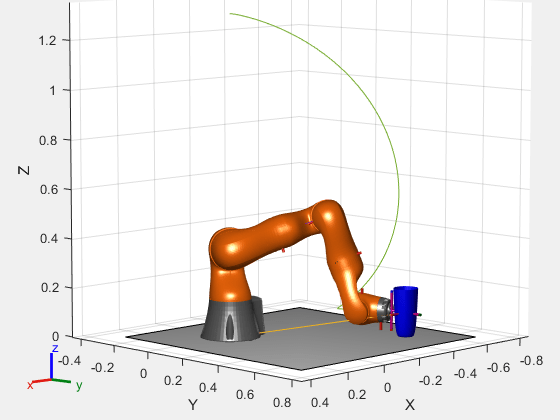逆運動学
マニピュレーター逆運動学、運動学的拘束
逆運動学 (IK) は、目的のエンドエフェクト位置を実現するために、ロボット モデルのジョイント コンフィギュレーションを決定します。ロボットの運動学的拘束は、ジョイント間の変換に基づいて rigidBodyTree ロボット モデル内に指定します。汎用逆運動学 (GIK) を使用して、カメラ アームの照準拘束または特定の剛体リンクの直交座標境界ボックスなどの拘束を満たすコンフィギュレーションを解決できます。"GIK ロボット拘束" オブジェクトを使用してこれらの拘束に対するパラメーターを指定し、generalizedInverseKinematics オブジェクトに渡します。
逆運動学の詳細については、逆運動学とはのページを参照してください。
アプリ
| 逆運動学デザイナー | Design inverse kinematics solvers, configurations, and waypoints (R2022a 以降) |
関数
ブロック
| Inverse Kinematics | エンドエフェクタの姿勢を実現するジョイント コンフィギュレーションの計算 |
トピック
- 逆運動学のアルゴリズム
逆運動学ソルバーのアルゴリズムとソルバー パラメーターの説明
- Inverse Kinematics for Robots with Floating Base
Calculate inverse kinematics for floating-base systems such as manipulators in space. (R2024a 以降)
- 逆運動学による軌跡制御モデリング
Simulink® の Inverse Kinematics ブロックを使用して、指定された軌跡に沿ってマニピュレーターを駆動する。



